|
Summary: The action began Monday,
March 19th, when a
coronal mass ejection from the Sun hit Earth's magnetosphere. Modest geomagnetic
disturbances began soon after the impact and then intensified
when the interplanetary magnetic field (IMF) near Earth turned south.
South-pointing IMFs create a weak spot in Earth's protective
magnetosphere that can allow solar wind gusts to penetrate. The
strong G3-category storm raged for more
than 24 hours.
Three days later on Thursday,
March 22nd, a weak interplanetary shock wave --the leading edge of a
coronal mass ejection that left the Sun on March 19th-- buffeted
Earth's magnetosphere. The impact sparked a period of high-latitude auroras that
dazzled Alaskans and other northerners.
Unless
otherwise stated, all images are copyrighted by the photographers.
|
|
Photographer, Location |
Images |
Comments |
 |
LeRoy Zimmerman,
Fairbanks, Alaska |
#1,
#2, more |
These stunning panorama shots by L. Zimmernan
are must-sees! March 20, 2001 |
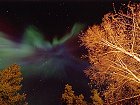 |
Jan Curtis,
Fairbanks, Alaska |
#1,
#2, #3,
#4, #5,
#6, #7,
#8, #9,
more |
J. Curtis: "The past two nights were absolutely
incredible; beyond words." March 23-24, 2001 |
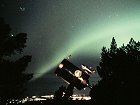 |
Roar
Hansen, 20 miles south of Bergen, Norway |
#1,
#2, #3,
#4, #5 |
Photo details: Nikon FE camera, 28 mm f/2.8,
40-60 s, 400 ASA Ektacrome-Elite film. March 19-20, 2001 |
 |
Rick Stankiewicz,
35,000 feet
above Canada |
#1,
#2, #3 |
R. Stankiewicz captured these pictures during
a flight from Hamilton, Ontario to Winnipeg, Manitoba, about
35,000 feet above Thunder Bay, Ontario. Photo details: 200 ASA
print film, a Canon F1 camera, 24mm lens, f/2.8, 30 sec. March
20, 2001 |
 |
Tom Eklund,
Valkeakoski, Finland |
#1,
#2, #3,
#4, #5,
more |
Photo details: Kodak Elitechrome 100 pushed 2
stops to 400ASA. 15 seconds exposure with 28 mm F/1.8 Sigma lens.
March 19-20, 2001 |
 |
Mark Simpson,
Calgary, Alberta, Canada |
#1,
#2, #3,
#4, more |
M. Simpson snapped these pictures of auroras
over Banff National Park in Canada. The aurora in picture #2 was so bright that
it illuminated the scene. #1
has jupiter in the top right corner. #4
shows the gothic Banff Springs hotel poking out above the trees.
Photo details: Film: NHGII Fuji Pro, 800ASA. Lens: 28mm, f2.8
30 second exposures. March 19, 2001 |
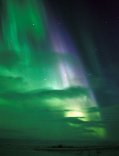 |
John Russell,
Nome, Alaska |
#1,
#2, #3,
#4, more |
J. Russell: "Beautiful active displays lasted
until daylight on March 20th. Very hazy early-on, but I rather
like the effect." Photo details: Nikon N90s, Nikkor 35mm
@f2.0, 8, 10 and 13 second exposures. Kodak Porta 800 and Fuji
NHG800 films." March 20, 2001 |
 |
Lyndon
Anderson, Bismarck, ND |
#1 |
L. Anderson took this photograph from a spot
just north of Bismarck, ND, at approximately 11 p.m. (CDT) on
Monday, March 19, 2001. Photo details: Royal Gold 400 film. 50
mm lens, 1.4 aperture, 20 seconds. March 19, 2001 |
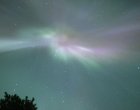 |
Petri
Kekkonen, Oulu, Finland |
#1,
#2 |
P. Kekkonen: "These auroras were photographed
near Oulu, Finland, on 19 March, 2001, at 19-21 UT." Photo
details: 15 second exposure on Fuji MS 100/1000 film @ 200 ISO
with Nikkor AF 28mm f/1.4 D lens. March 19, 2001 |
 |
Poker Flat
Research Range, University of Alaska, Fairbanks |
600 kb
MPG movie |
Observers at the Poker Flat Research Range near
Fairbanks captured this wide-angle movie of auroras spanning
a 2-hr interval on March 22, 2001. |
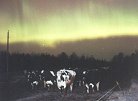 |
Duane
Clausen, Menominee, Michigan |
#1,
#2, #3,
#4, more |
With the aide of a flash unit, Duane Clausen
captured several unusually beautiful pictures of auroras over
Michigan, including this one with a group of bedazzled cows.
March 20-21, 2001 |
 |
Jan Curtis,
Fairbanks, Alaska |
#1,
#2, #3,
#4, more |
J. Curtis: "A major aurora storm is an unbelieveable
event, but photographing it is difficult because of the extreme
brightness and rapid movement of the aurora. These images are
a poor example of what the experience is like in person. Film:
(#1 & #4)
Fuji Superia 800, f/2.0, 35mm lens, 8 secs; (#2
& #3) Kodak Supra
800, same settings." March 20, 2001 |
 |
Marek Dudka,
Sun
Prairie, WI |
#1, #2, #3,
#4 |
M. Dudka: "As I was walking my dog, I noticed
a strange greenish blue light about 25-30 degrees over the northern
horizon. This cloud of light suddenly became alive. It grew brighter
and brighter and it started pulsing hypnotic waves and rays throughout
the entire northern sky. The display started around 11:30 PM
and lasted till nearly 3:30 am (local time). I can't wait for
other aurora displays..." March 19, 2001 |
 |
Marko Grönroos,
Turku, Finland |
#1,
more |
M. Grönroos captured this unusual panorama
of the Northern Lights using a Casio QV-3000EX/Ir digital camera.
Photo details: 13 s exposure, aperture F2, about ISO 320 equiv.
CCD (ISO 100 + 2 gain setting), temperature about -8 degrees
Celsius (temperature affects CCD noise greatly), 35mm equivalent
lens. March 20, 2001 |
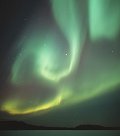 |
Jouni
Jussila, Oulu, Finland |
#1 |
J. Jussila captured this dazzling image from
a spot near the University of Oulu in Finland on 19 March, 2001,
at ~21 UT. Photo details: Fuji Provia 100F, pushed 1 stop to
200ASA, 15 seconds exposre with 24 mm F/1,4 (Canon) lens. March
19, 2001 |
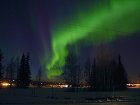 |
Andre Clay,
Fairbanks, Alaska |
#1, #2 |
Andre Clay snapped these photos using a Sony
DSC-S70 digital camera, ISO 100, 8 second exposure. March
20, 2001 |
back
to spaceweather.com |













